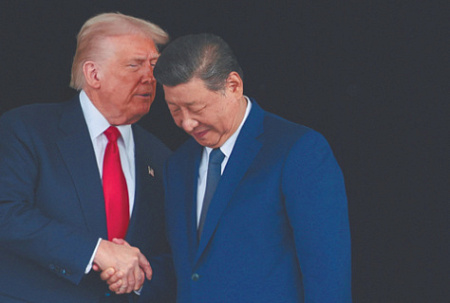
In the high-stakes arena of international diplomacy, even a brief public remark from a head of state can send ripples across the globe. Such was the case with a recent post by former US President Donald Trump on his Truth Social platform, sparking a diverse range of reactions from cautious approval in Beijing to palpable alarm among traditional US allies. His declaration, ahead of a planned meeting with Chinese President Xi Jinping in South Korea, referenced the formation of a ‘G2’—a concept implying the United States and China would coordinate actions and guide other nations, immediately capturing global attention.
The idea of a ‘G2,’ or Group of Two, is not new. As the Associated Press recalls, the term first gained traction in the early 2000s, introduced by American economist Fred Bergsten. He posited that the world’s two largest economies should engage in direct dialogue, a notion that inherently suggested a leveling of power between the two global giants. This concept has long been a strategic aspiration for China, keen to transition from a regional power to a recognized global leader, yet it simultaneously ignites deep-seated anxieties among Washington’s allies and partners, who fear a diminished role for themselves in a US-China-centric world order.
Neil Thomas, a fellow at the Asia Society Policy Institute in the US, explains the implications: “The G2 concept signifies that the US and China are the foremost powers on the global stage, with all others expected to acknowledge their equal weight.” To grasp the full significance, one must consider China’s historical narrative. Beijing has consistently resisted attempts to ‘contain China’ since before the Communist Party’s victory in 1949, perceiving such efforts as attempts to weaken and subjugate the nation. This historical context illuminates why China’s 21st-century foreign policy has often aimed to challenge the Western-built global order, with initiatives like the Belt and Road being viewed, in part, as a counter-strategy to perceived containment.
Trump’s provocative post boldly proclaimed, “Meeting with Xi will lead to eternal peace. God bless the USA and China!” This sentiment was notably echoed by Pete Hegseth, head of the Pentagon, in his own social media statement following discussions with Chinese Defense Minister Dong Jun. Meanwhile, Fred Bergsten, the original proponent of the G2 idea, expressed satisfaction, noting that his prediction of the US and China becoming economic superpowers appeared to have materialized.
Beijing’s response to Trump’s statement was swift and measured. The Ministry of Foreign Affairs indicated China and the US could jointly fulfill international responsibilities, reaffirming their ritualistic call for a “multipolar world.” However, Chinese bloggers were less restrained in their enthusiasm. Hou Sha Yuegang, a prominent commentator, posted: “Trump’s G2 means the US has recognized the impossibility of maintaining a world order where America is the sole hegemon. They’ve acknowledged reality and want to build a bipolar world with China. Consequently, Europe, not to mention Japan and India, are not as important.”
Nevertheless, not all experts foresee an easy path to co-governance. Zhao Minghao, a Chinese expert on US relations, believes that a new G2 would not simply lead to China and America jointly managing global affairs, citing that persistent competition would inevitably hinder full cooperation. Alexander Lukin, research director at the Institute of China and Contemporary Asia of the Russian Academy of Sciences, offered a nuanced perspective to “NG.” He suggested that Trump’s remarks should be taken seriously but not literally, interpreting them as a strategic move primarily aimed at securing trade deals with Beijing, with no intention of ceding America’s ultimate global leadership role. Lukin also drew a parallel to Zbigniew Brzezinski’s 2009 call for close US-China cooperation to resolve global issues without Russia’s involvement, advising Moscow to closely monitor but not react directly to this re-emerging discussion.
